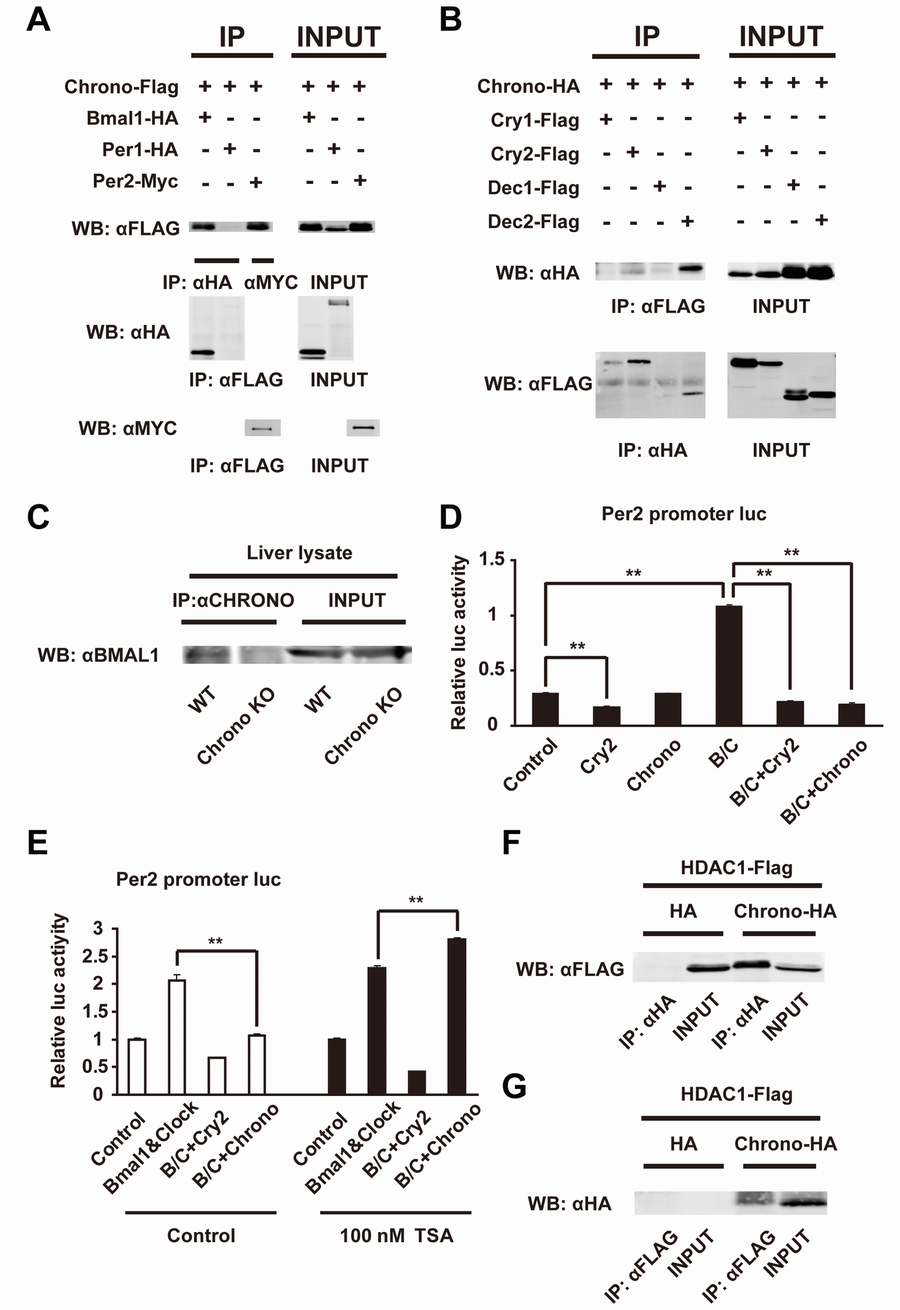All organisms, from mammals to fungi, have daily cycles controlled by a tightly regulated internal clock called the circadian clock.
The circadian clock is influenced by exposure to light and dictates the wake-sleep cycle. At the cellular level, the clock is controlled by a complex network of genes and proteins that switch each other on and off based on cues from their environment and most genes involved in the regulation of the circadian clock have been characterized, but a key component was missing in mammals.
In a new study, a team performed a genome-wide chromatin immunoprecipitation analysis for genes that were the target of BMAL1, a core clock component that binds to many other clock genes, regulating their transcription.

CHRONO's interaction and the role of CHRONO as a transcriptional repressor.(A and B) Immunoblots show expression of proteins in COS7 cells transfected with the indicated plasmids after IP with antibodies. INPUT indicates immunoblotting results of total cell lysates. (C) Endogenous BMAL1 and CHRONO interaction in the WT and Chrono KO mice liver. (D) Effects of Chrono expression on the Per2 promoter luciferase activity. Overexpressed CHRONO repressed transactivation by exogenous expression of BMAL1 and CLOCK (B/C) in the Per2 promoter in a similar way to Cry2. Bars represent means ± S.E.M. of four samples (**p0.001, Student's t test). (E) An HDAC inhibitor (100 nM TSA) restored the Chrono-derived repression of transactivation with BMAL1 and CLOCK (B/C) on the Per2 promoter. The basal transcriptional activity of Per2 promoter in each experiment was set to 1. Data are means ± S.E.M. of four samples (**p0.001, Student's t test). (F and G) CHRONO and HDAC1 interaction in vitro. Co-IP assays of COS7 cells using HA-tagged CHRONO and FLAG-tagged HDAC1 as indicated. HA protein was used as negative control. doi:10.1371/journal.pbio.1001839
The authors characterize a new circadian gene that they named Chrono and show that Chrono functions as a transcriptional repressor of the negative feedback loop in the mammalian clock: the protein CHRONO binds to the regulatory region of clock genes, with its repressor function oscillating in a circadian manner. The expression of core clock genes is altered in mice lacking the Chrono gene, and the mice have longer circadian cycles.
"These results suggest that Chrono functions as a core clock repressor," conclude the authors.
In addition, they demonstrate that the repression mechanism of Chrono is under epigenetic control and links, via a glucocorticoid receptor, to metabolic pathways triggered by behavioral stress.


